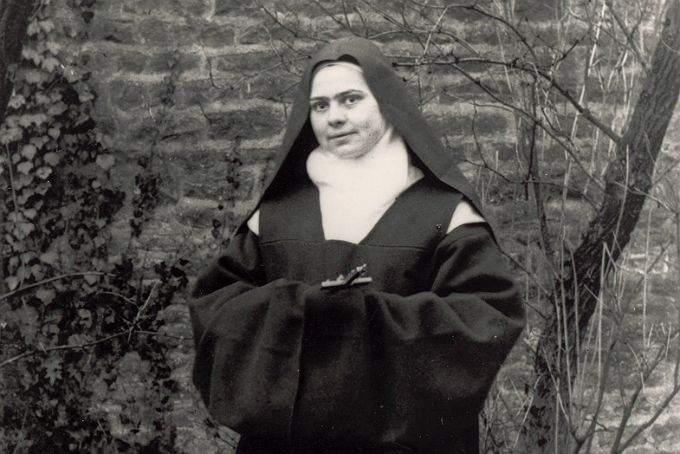Both local officials and Pope Francis have found that Marie-Paul Stevens, a religion teacher afflicted with Sjogren’s Syndrome while on a pilgrimage to a Carmelite convent in Flavignerot-Dijon, was healed in 2002.
The Archdiocese of Dijon, France, concluded its own investigation into the incident attributed to Blessed Elizabeth of the Trinity in 2011 and submitted its findings to Rome. Stevens had gone on a pilgrimage to the monastery in thanksgiving for graces she had already received through the intercession of Blessed Elizabeth.
She believed that Blessed Elizabeth was already helping deal with her difficult disease and also helping grow in a life of prayer. It was while she was at the convent that she felt she was healed.
Forty witnesses, including medical experts, confirmed her report. After a period of review, Pope Francis has found the miracle to be credible. A formal date for the canonization is coming in the next couple of weeks.
This is the second miracle officially attributed to Blessed Elizabeth of the Trinity. Back in the 1980’s, Cardinal Decourtray (at the time Bishop of Dijon but later Archbishop of Lyons and now deceased) attributed the cure of his own cancer to her intercession.
This miracle was used in the process for Blessed Elizabeth’s beatification, an important recognition by the Church that the soul is in heaven and actively interceding for the local Church. Through the years there have been many other miracles, but these were difficult to confirm.
Although she is reverenced by the faithful of Dijon and the whole Carmelite family, those who have a devotion to her are amazed at the influence of Blessed Elizabeth on the universal Church.
The reason why there is worldwide devotion to Blessed Elizabeth may be due to the many conversions to a deeper life of prayer attributed to her intercession and spiritual mission in the life of the Church. She is the only 20th century female mystic quoted in the Catechism of the Catholic Church and her prayer, “O My God Trinity whom I adore,” has helped contemplatives across many religious families rediscover a personal devotion to the Holy Trinity.
She was firmly convinced that the reality of heaven is not simply something for the future, but instead something already beginning now in faith. Contemplative prayer, for Blessed Elizabeth, anticipates the glory that awaits us.
Even before her beatification, Hans Urs von Balthasar wrote about her and claimed that studying her writings played an important role in his own theological approach. At her beatification in 1984, St. John Paul II identified her as an important influence in his own spirituality.
Later, Cardinal Nguyen Van Thuan drew from her writings for the retreat he gave to the Roman Curio in 2000 before her death. Centennial celebrations in 2006 throughout France indicated that many have discovered devotion to the Trinity and deeper contemplative prayer through her life, writings and intercession.
The inclusion of Elizabeth of the Trinity in the Canon of the Saints proposes her example and veneration to the whole Church, and is meant to encourage the faithful to seek her intercession for their spiritual needs.
The origin of her spiritual message derives from letters and notes that she wrote to her friends, family and fellow Carmelites. From the beginning of her religious life, Sister Elizabeth wrote to encourage them in the life of prayer.
She presented the Trinity as the mystery of divine love and advocated that we are meant to abide in this “immensity,” as our true home, not only momentarily but ceaselessly. Very practically this means learning in each moment to let go of all self-occupation and to allow ourselves to be caught up in God.
She believed that her mission in heaven would be to help souls on earth avail themselves of the transforming power of God.
In her mid-20s, she was diagnosed with Addison’s disease, at the time incurable, and died within the year. Throughout her illness, she continued to encourage her friends and family to trust in the power of God more than their own inadequacies.
Rather than suggesting complex forms of meditation or other elaborate spiritual exercises, she spoke about prayer as “a wholly loving movement.”
The few meditations she does offer are geared to this movement because she viewed it as the pathway to Christian holiness and deeper union with God. Humble trust in the loving presence of the Holy Trinity is a powerful theme that one finds throughout her writings — writings filled with the language of the Bible, the Carmelite Doctors of the Church, and some of the great medieval mystics.
Anyone who takes the time to read her writings discovers what Conrad De Meester, the world expert on her life, calls “a mosaic in an apse.” She brings together many powerful sources and roots them in the Scriptures like the fragments of stone that makes up a mosaic.
She intends that we do not simply admire her work, but that we experience the spiritual space they open up, like the vault of a Church, for the praise of God.
There is something almost musical about the way she weaves beautiful teachings together. For her, allowing these teachings to lift up our hearts into silent prayer helps us find our own inner harmony with God and puts our whole lives in tune with his will.
Yet, she would be disappointed if we only read her spiritual message. She told those closest to her that it would increase her joy in heaven if she was asked to help.
Through her canonization, the Church is also encouraging us to ask for her intercession so that in our own time we might rediscover the gift of contemplative prayer for our lives.
Interested in more? Subscribe to Angelus News to get daily articles sent to your inbox.

